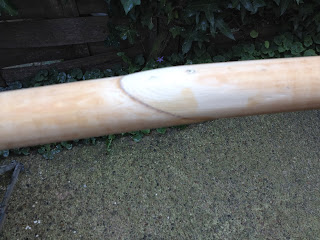It’s the time of year when autumn leaves cover my garden.
Action was required to get rid of them. Therefore I took the opportunity to exercise
my body by disposing of them in the green waste bin.
While I laboured with a rake and a garden vacuum cleaner, I exercised
my mind by pondering ‘Minnow’s’ lack of a depth sounder. I have a lead and line
for taking soundings, but finding depths by this old-fashioned method is not as
convenient as by an electronic sounder. Observing a series of readings on a
digital screen requires little effort.
Focussing on the subject, I considered the possibility of
installing a NASA Marine Sting Ray sounder I have, but it lacks a power cable
and a transducer. By comparison with modern sounders, it looks old-fashioned.
Modern digital sounders are more compact, more precise, and they are easier t
read.
Nevertheless, I may install my Sting Ray if I can obtain the
missing components for only a few pounds.

















































